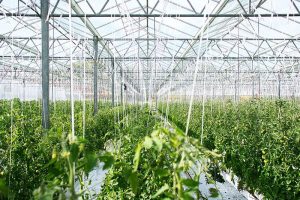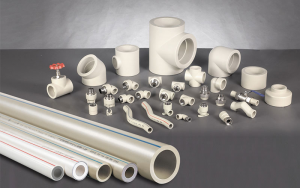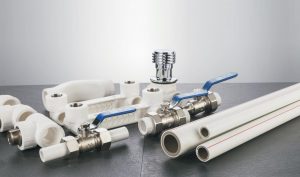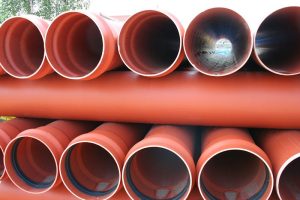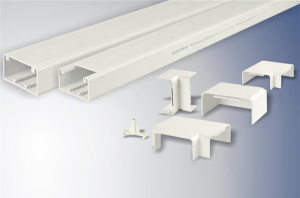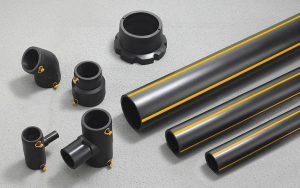Table of Contents
High-density polyethylene (HDPE) drainage pipes have become an indispensable part of modern pipeline systems due to their excellent performance and economy. It is widely used in various fields, such as municipal water supply, sewage treatment, agricultural irrigation, rainwater discharge, etc.
Proper maintenance and management are significant to ensure the long-term stable operation of HDPE drainage pipes. This article will introduce the lifespan of HDPE drainage pipes and related information on extending them. Read on to learn more!
What is the Lifespan of HDPE Drainage Pipes?
An HDPE drainage pipe is known to last up to 50 years or longer when installed and maintained properly. This remarkable durability of HDPE double wall corrugated pipe owes to its unique properties, including resistance to chemical corrosion, aging, stress cracking, etc.
However, when assessing the lifespan of plastic drainage pipe materials, it is essential to consider various factors. Effective installation methods, routine maintenance, and environmental conditions are critical in determining the actual service life of double-wall HDPE pipes.
What Affects the Lifespan of HDPE Drainage Pipes?
Several critical factors influence the lifespan of HDPE pipes. Understanding these elements is essential for maintaining high performance and durability. Here are the key factors:
1. Environmental Factors
Exposure to UV radiation, temperature fluctuations, and chemical corrosion can significantly impact the life expectancy of HDPE drainage pipes.
Although HDPE drainage pipes have a certain degree of UV resistance, long-term exposure to radiation can cause aging. In addition, rapid temperature changes may also cause thermal expansion and contraction of pipes, affecting their sealing performance. Meanwhile, corrosive chemicals in industrial environments can also promote pipeline aging and damage.
2. Material Quality and Production Process
The quality of the HDPE drainage pipe material is another crucial factor to consider. Factors such as wall thickness, impurity content, and internal structure affect the strength and durability of pipelines.
Appropriate wall thickness can ensure the strength and flexibility of pipes. The lower impurity content and uniform internal structure ensure the reliability of the pipes in different environments.
3. Installation Quality
Installation quality is key to the lifespan of HDPE drainage pipes. Factors such as connection methods, potential construction damage, and the quality of backfill soil can all affect performance. Inadequate installation practices can lead to failures, which can reduce the estimated life of the HDPE sewer pipe.
4. Operating Conditions
Operating conditions, including fluid pressure and external loads, can affect the service life of the HDPE water pipe. Excessive fluid pressure and external loads may cause pipeline deformation or rupture.
Therefore, when using HDPE water pipes, it is necessary to choose the pipe specifications and wall thickness reasonably according to the actual conditions and analyze the possible pressure around the pipe in advance.
How to Extend the Service Life of HDPE Drainage Pipes?
By focusing on specific strategies, you can significantly enhance the durability of HDPE drainage pipes. They help to reduce the need for frequent replacements and extend the lifespan of these plastic drainage pipe products. Here are some key tips:
1. Material Selection
Choosing high-quality pipe materials is important for the longevity of HDPE drainage pipe systems. Ensure that the models you choose are made from top-grade polyethylene, which offers superior resistance to corrosion, aging, and chemical exposure.
The right material selection minimizes the risk of unexpected failure and enhances the performance of the drainage system.
2. Design Optimization
Manufacture and design potentially affect the lifespan of HDPE pipes. Select appropriate pipe wall thickness based on the actual usage environment and load requirements to ensure that the pipes will not deform or rupture due to excessive pressure.
Conduct stress analysis to optimize the layout and support structure of pipelines, reducing excess stress caused by external loads or temperature changes.
Utilizing double-wall HDPE pipes with a sturdy structure design can enhance strength and flexibility. It further improves resistance to environmental factors and physical stress.
3. Proper Installation
Proper installation alleviates the risk of leaks and structural failures. Use professional connection methods, such as hot melt connections or electrofusion connections, and test their sealing performance after connection.
Follow relevant regulations for construction, especially in terms of the burial depth of pipes, backfill soil quality, and distance from other pipes or facilities.
During the construction process, avoid damage to the pipeline, such as scratches or flattening, as these damages can shorten the service life of the pipeline.
4. Regular Maintenance
Adopting a routine maintenance plan is essential for the long-lasting life of HDPE sewer pipes. For that, regular inspections should be conducted early to address any indications of wear or damage.
Additionally, applying UV protection for HDPE drainage pipes can prevent degradation over time, such as by covering them with protective layers. Regular maintenance not only enhances the working life of pipes but also ensures efficient drainage operation.


LESSO HDPE Double-Wall Corrugated Pipes
LESSO HDPE Double-Wall Corrugated Pipe is engineered to meet the needs of various applications. It serves in areas of municipal sewage systems, rainwater management, industrial waste discharge, etc. Being designed for durability and efficiency, these pipes provide reliable solutions for effective drainage and water supply in both residential and commercial settings. Key features include:
- Constructed from high-density polyethylene, which ensures excellent strength.
- Available in a range of diameters from 110mm to 800mm to accommodate various project requirements.
- Offered ring stiffness ratings of SN4 and SN8.
- Standard colours include black, with customization available upon request.
- Ideal for use in municipal sewage systems, rainwater discharge, flood water drainage, irrigation, ventilation solutions for mines and buildings, and the discharge of industrial waste.
Conclusion
The longevity of the HDPE drainage pipe depends on material quality, environmental factors, and installation practices. Under proper use, HDPE pipes can be used for 50 years or longer. Choosing high-quality solutions like LessoLESSO HDPE double-wall corrugated pipes ensures optimal efficiency in various drainage and ventilation applications.
Contact us for more information now!



